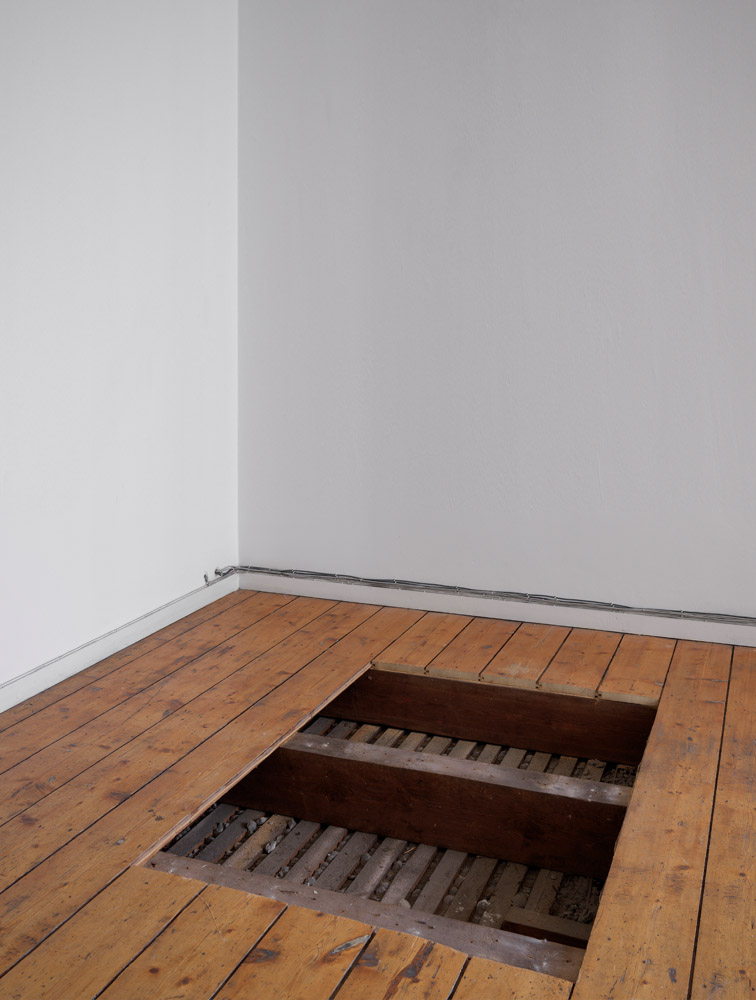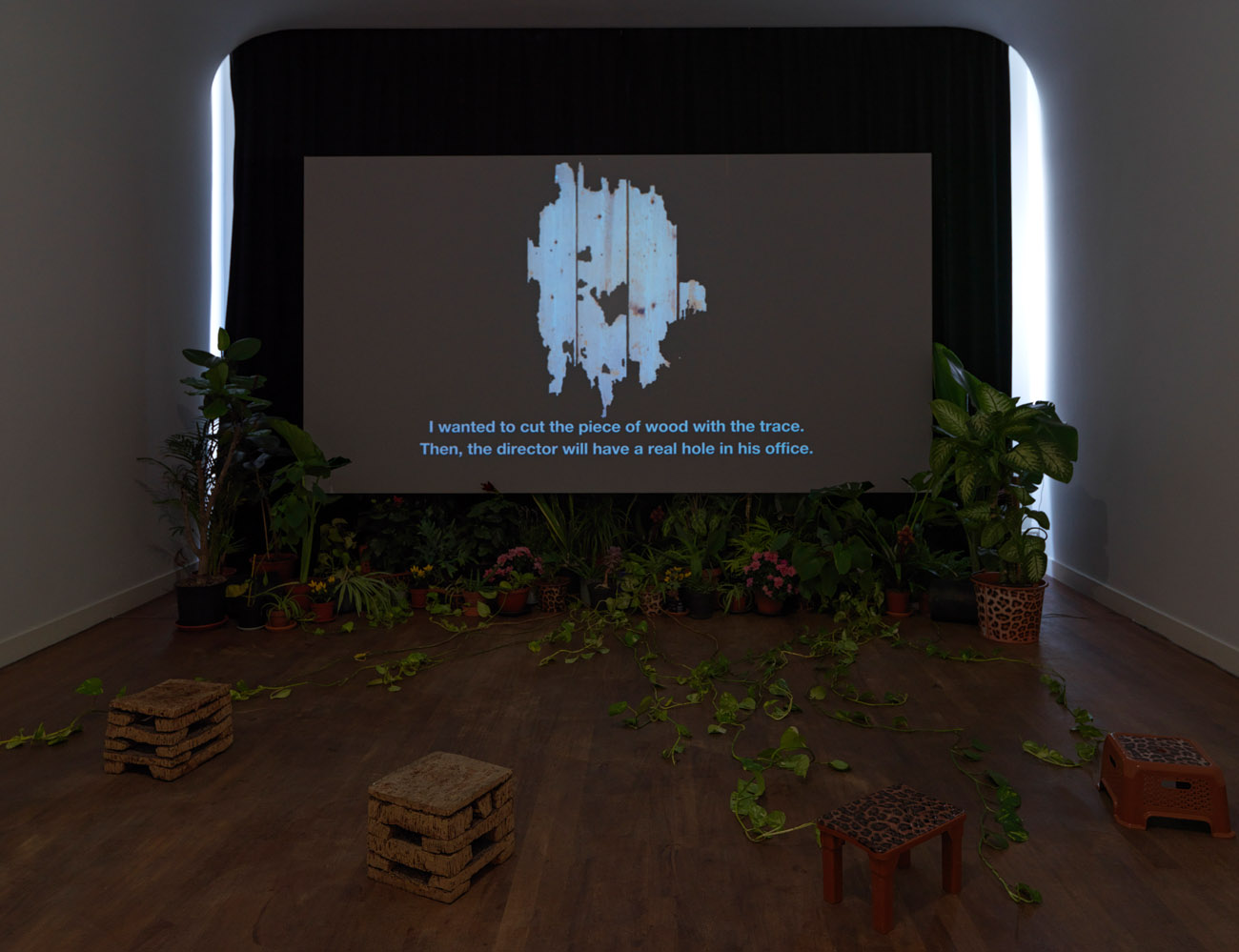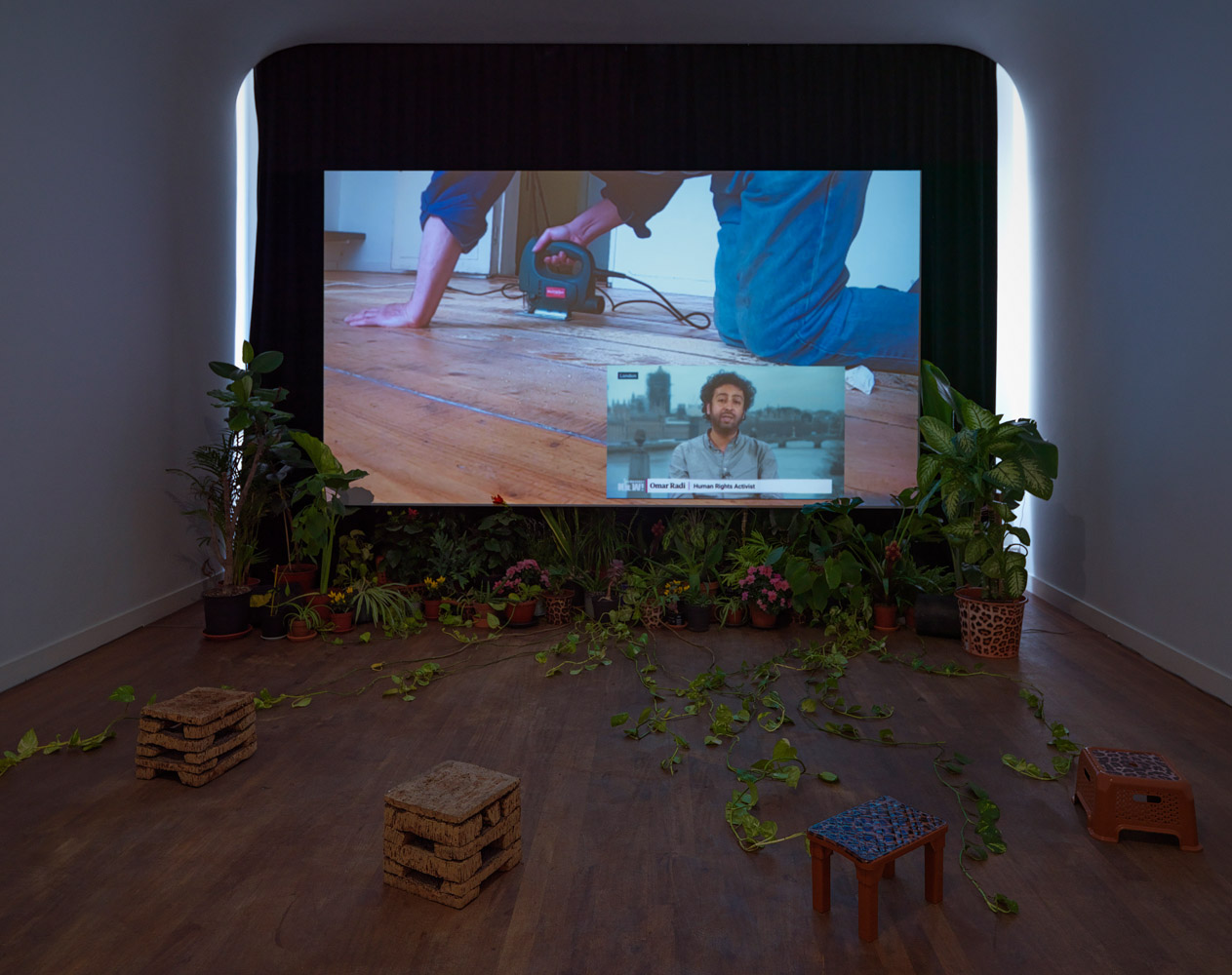





“A wooden floor in the office of a director of a Dutch institution has a hole. A hole of 102 cm by 120 cm, exactly where the director’s chair once stood. A hole that required 23 years of labor — 23 years for a director to exhaust even a floor. This hole is called the hole of power. It had been cut out, and the plan was to send it to an expropriated piece of land in Morocco. But for various reasons, this new Dutch artifact never reached its destination.
All these complications form the narrative thread of the video. It is a playful montage made up of archives, popular songs, TV photos, media excerpts, an animated tumor, endless scenes in which Franck, an old carpenter, struggles to cut this section of the floor, and then images of this piece of wood traveling around Casablanca and Rabat. The journey of this hole playfully probes power dynamics within specific political contexts.”










The Hole’s Journey
Installation with plants from Ouled Sbita’s Tribe, leopard stools, cork stools, cockscomb’s plant plant smell , and one video in loop.
“One might think that many of Ghita Skali’s installations, sculptures or videos are purely fictitious thought experiments carried out by the artist to satirise partly absurd, partly violent situations and events, both social and political. And yet, they reveal themselves to be rooted in reality. Even when she does not confront, she criticises, and always with a sense of humour. She involves the visitors of her exhibitions by becoming the host who knows exactly what is expected of her. And what do we expect from her with our Western understanding of art? We expect her to represent and show us what art from the Arab world looks like. Suddenly we find ourselves full of prejudice, and the work proposes counterpoints to these complexities. Instead of bringing something from ‘there’ to us, Skali sent something from Amsterdam to Morocco. During this process, the artist intensively studied the floor in the office of De Ateliers’ director: to be precise, a 119cm x 160 cm section of the wooden parquet. It was on this very piece of floor that the former director of the institution rolled back and forth with his office chair for 23 years, resulting in a very visible sign of wear: a hollow in the wood. Inspired by the works of Jan Dibbets and Ger van Elk, she used this hollow to propose a distortion of these hegemonic forms and then inserted it into another reality: the land predation in Morocco. She had the floor cut out and sent to Morocco as an artefact and there, in collaboration with ——— ———— and —— ———, the floor was sent, well packed, to the Ouled Sbita tribe, who were unlawfully expropriated by the government. We know that the floor is now in Morocco, but not much else. The work is also an experiment in terms of a traditional documentation of a (local) struggle and at the same time a a work in the process of being created on different continents, in different cultural environments and under numerous unforeseeable influences. In front of the director’s office stands the performer Nadia Bekkers, who has the function of a doorwoman for the work “A reversed exclusion system” and lets people pass according to a system of terror that follows no logic. Just as people are selectively harassed by authorities because of their appearance, visitors now have to endure the seemingly arbitrary harassment if they want to see the hole with their own eyes.”
Fabian Schöneich
︎
This project was linked to the intervention
“The Hole might be on display” ︎
︎
Press Leakage
︎ 2023: Ghita Skali et le trou du pouvoir - by Mariam El Ajraoui - Terss
︎ 2023: Yellow laugh - by Lena van Tijen - Mediakunst platform
︎ 2022: A story about the remarkable journey of two wooden slats - by Annosh Urbanke
︎ 2022: Aidsburgers, medical horoscopes and holes in the floor - by Suzanne Wallinga - Metropolis M
︎ 2021: The hole's Journey - by Marko Stojiljković - Ubiquarian
︎ 2021: Artwork of the week : The Hole's Journey - by Anna van Leeuwen - De Volkskrant
︎ 2021: Intertwining art and activism across the Mediterranea- by Madeleine Collier - IFFR.
︎ 2021: The Hole’s journey - Afterthoughts with Omar Berrada and Aboubakr Jamai - IFFR
︎ 2020: After a two-year stay at De Ateliers - by Kees Keijer - Het Parool
︎ 2020: The Hole might be on display - by Nadeche Remst - Metropolis M